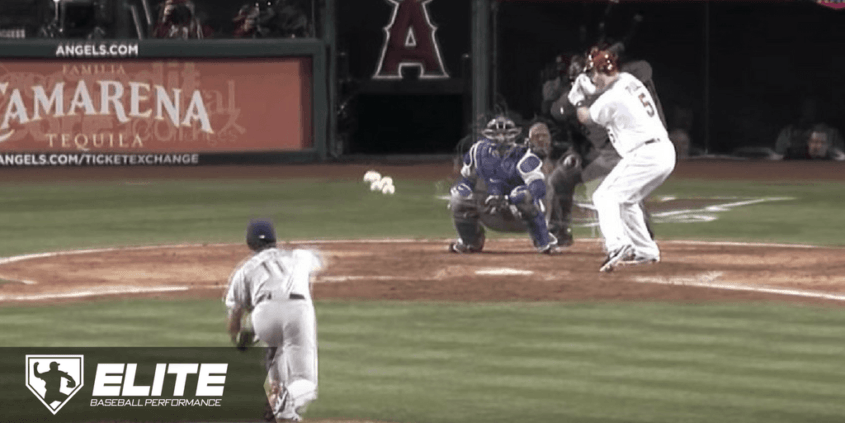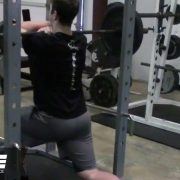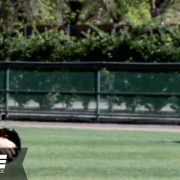Tunnel Vision: Making Every Pitch Look The Same
First and foremost – Velocity is STILL King, and for the foreseeable future, it will remain king. However, with the emphasis over the past ten years of throwing harder and harder, I feel that the art of pitching has been lost.
This article is for the reader that would like to get back to learning how to pitch and pitch effectively. One way to do this is to master the concept of “Effective Velocity.”
The Foundation of Effective Velocity
Before we get into the complex details, I want to start with the foundation of Effective Velocity, which is “pitch tunneling.” Pitch tunneling is rarely ever mentioned amongst other important aspects of training for pitchers, but every pitcher should instill this in their off-season training and put to use when they’re on the mound.
Pitching can be as simple or as complicated as you choose to make it.
It goes from as simple as the catcher setting up on the outside part of the plate, and you throwing the ball. Or, it can be as detailed as knowing which pitch to throw, in what situation and why.
Physically, the act of pitching is pretty complex. There are a lot of moving parts within the delivery that need to be moving in concert with each other. These parts all need to be synced in the correct order to ensure accuracy and maximum velocity (when necessary) of each pitch.
In the movie “Bull Durham,” Crash Davis (played by Kevin Costner), tells rookie pitcher, Nuke LaLoosh:
“Don’t think, it can only hurt the ball club.”
Baseball has traditionally struggled with its intellectuals, dismissing them as peculiar or eccentric. Think Barry Zito.
I want to make this clear – every pitcher, EVERY one of them, should be thinking along with their catcher and pitching coach, as to what pitch, what speed, and what location they should throw the ball.
Baseball has always been far more comfortable with its traditions; look at how long it took Major League Baseball to come around on instant replay! However, many MLB organizations are still in the pre-historic age when it comes to instituting new theories and philosophies – whether it is how they draft players, develop players, manage in-game situations, or their overall organizational philosophy.
In any competitive endeavor, the goal is to gain an advantage over your opponent, one that you can exploit. Pitchers have been trying to gain this vital inch on their adversary, the hitter, since the first pitch was thrown. The ultimate goal of any pitcher, when bringing the game down to pitch-by-pitch, is to miss the barrel.
Because of its complex nature, pitching has had it’s more than a fair share of theories. Most have fizzled out, proven just to be a flash in the pan. Think of how many gimmicky advertisements you see online or even on TV that guarantee this and that (Please do me a favor, run away as fast as you can from anyone that guarantee’s to add 10-15mph of velocity in 30 days – RUN).
However, one theory has taken MLB organizations by surprise with some traction on its research of more than 12,000 amateur at-bats, and more than 5 million pitches, a theory of design and level of success. The man that created this theory and the driving force behind its success is, Perry Husband.
Who is Perry Husband, you ask?
Perry Husband has more than ten years of research in the art of timing in the field of hitting, which has led to some amazing discoveries in what hitters can do, and more importantly, what they cannot do.
At CSU Northridge, he was co-captain of the NCAA Division II champs in 1984 and was named MVP of the College World Series. After two years in the pro ranks at the minor league level with the Minnesota Twins organization, he pursued a career as a PGA teaching apprentice in Southern California. After teaching golf for four years, Perry opened and operated The Baseball Academy for the better part of 17 years. He has written three books, “Downright Filthy Pitching,” “Downright Filthy Pitching: The Hitter’s Attention Theory,” and “Downright Filthy Pitching: The Science of Pitching Sequencing.”
What is Pitch Tunneling?
Husband’s theory on ‘Pitch Tunneling’ is centered on that every hitter must decide to swing no later than the first 20 ft. a pitch is in the air.
Business Insider Science produced an excellent video explaining this concept:
Now, I’m sure everyone reading this article will understand that pitchers throw fastballs, upwards of 60% throughout the duration of a game, therefore — the pitcher’s fastball trajectory will be the baseline that the hitter will read and react, in comparison with other pitches thrown.
To use this tidbit of information to our advantage, we need to train ourselves to have every pitch look the same for 20ft (or as close to this mark as possible). This will make it far more difficult for the hitter to get an early read on the trajectory, spin, velocity and location of the pitch.
Check out the video below of Yu Darvish and how all FIVE of his pitches are thrown consistently through the same tunnel, making him one of the most difficult pitchers to face in Major League Baseball.
According to Husband’s research, a normal strike zone, when extrapolated to 20 feet from a pitcher’s release point, measures 13 inches by 10 inches. This philosophy states that if a pitch passes through this tunnel of 13” x 10” not only will the pitch theoretically be a strike, but also be more difficult for the hitter to hit the pitch with 100% on time contact.
How to Improve Your Pitch Tunneling
So you may be asking, “how can I start training myself to throw all my pitches through the same tunnel?”
One of the easiest and the most cost-effective training methods is right in your pocket! The iPhone is a tremendous tool — it records video at 120 frames per second, allowing anyone to break down their mechanics and their pitches frame by frame!
I suggest recording from behind the pitcher’s head (preferably from above his throwing arm), also from behind the catcher (you can position the camera or iPhone in each batter’s box). Each angle provides valuable information to the pitcher when training; i.e. how each pitch will look to lefties and righties, its downward angle, and break of the pitch.
Now, I want to speak candidly here; this process will take time, especially with youth and high school-aged pitchers, because at this age level pitchers do not throw their off-speed pitches with the same intent and arm speed as their fastball (this is key!). Most youth/ high school aged pitchers will have their breaking balls “pop” out of their hand, making it easier for a hitter to recognize that an off-speed pitch is on the way. This is where arm speed is vital!
Success with this type of training is measured in building the neuro-pathways of the pitching delivery, throwing each pitch with the same intent, out of the same tunnel.
This will take hundreds, if not thousands of pitches thrown, over the course of tens of hours of training! It won’t come easy! But the success and results that will follow all of the hard work will make it well worth it.
By studying your pitching from the eye of the batter, you’ll be able to begin understanding how your pitch tunneling looks to the batter.
Jonathan Morse
Latest posts by Jonathan Morse (see all)
- Tunnel Vision: Making Every Pitch Look The Same - March 14, 2017










“Please do me a favor, run away as fast as you can from anyone that guarantee’s to add 10-15mph of velocity in 30 days”
On this site, Brent Porcieau’s 3x pitching is endorsed and he makes claims like this. How can this blog post and his products be on the same site? Confused.
Hi Mike, appreciate the comment. I wanted to reply personally. As editor of the site, I can tell you that I have personally reviewed every product that EBP recommends, including Brent’s. I’ve also talked with pro players that have used Brent’s programs to again assess their feedback. I like his program. Do I do exactly the same things as Brent? No, but I also am open to that fact that we all have different, yet valid opinions. Is his program perfect? No, but neither are mine. Would I market my program the same way? No, but that doesn’t mean it’s not a good resource.
I think Jon was trying to make the point that some people market unrealistic claims, like adding 10-15 MPH in a short time. I think we can all agree 10-15 miles is unrealistic. Brent actually markets 5-10 MPH, which is optimistic, but I don’t think is unrealistic for some. I can show you lots of scientific articles that accomplish this increase in velocity by using some of the methods Brent’s program includes.
We’re trying to filter through all the bias and arguments on the web re: baseball performance and provide recommendations based on what we feel is helpful information regardless of the clashes, twitter arguments, and personality wars. We’re trying… Thanks for the input!